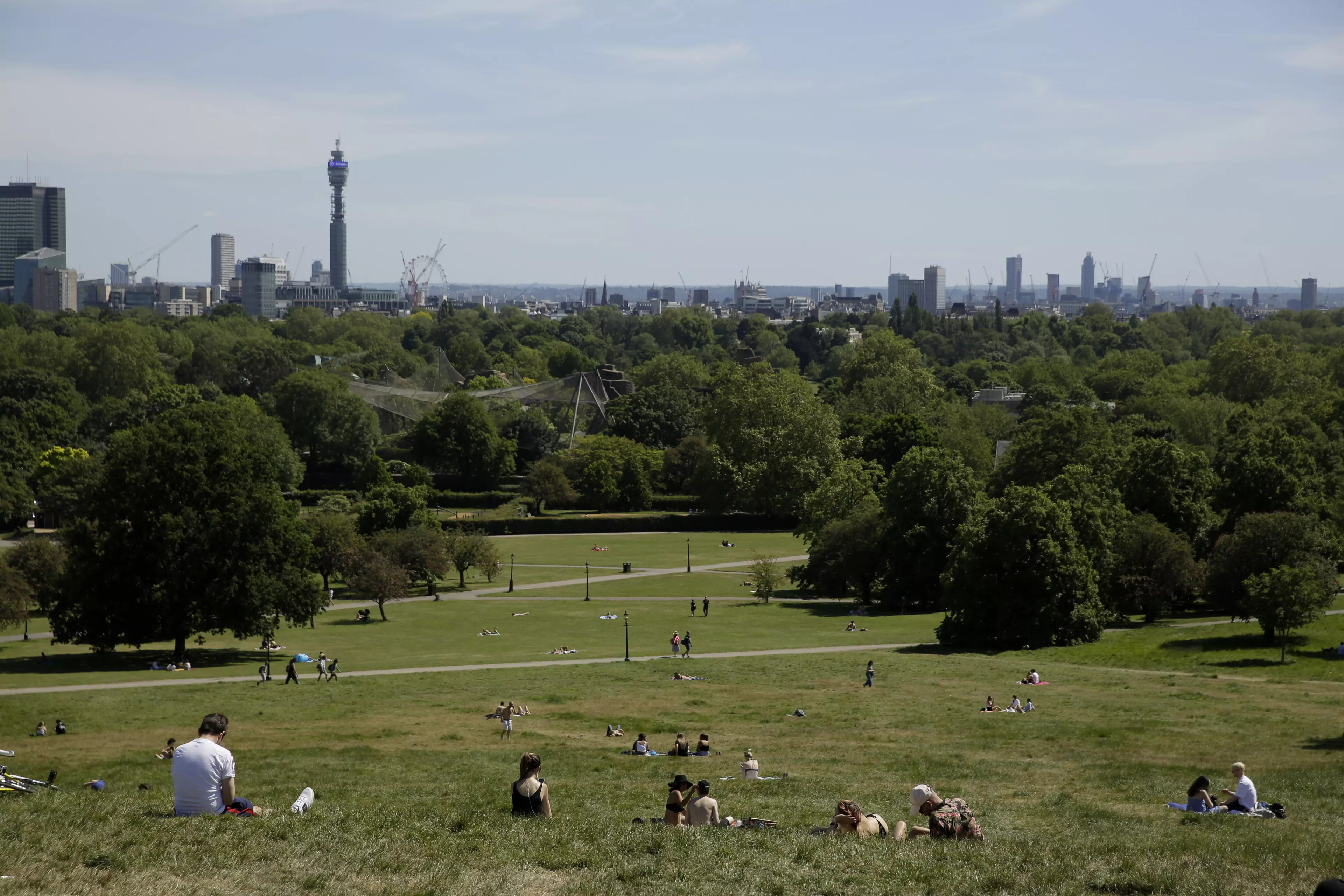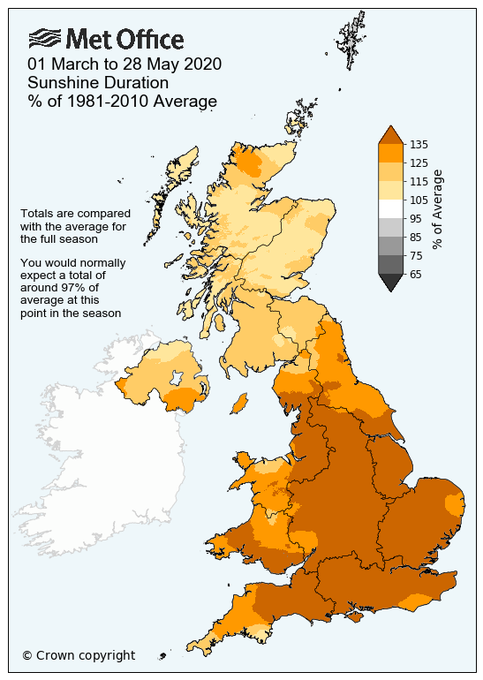
The UK has recorded the sunniest spring since records began in 1929, according to the Met Office.
In the last 91 years, there have only been nine UK springs recording more than 500 hours of sunshine, with the previous sunniest being 555.3 hours in 1948.
Advert
But up until 27 May (Wednesday), the spring of 2020 has already had more than 573 hours of lockdown sunshine.
It's not stopping there either - with the expectation of more sunshine on the cards, this spring will most certainly cement its record.

Dr Mark McCarthy, from the Met Office's National Climate Information Centre, explains: "Much of spring has been dominated by successive areas of high pressure, leading to sunny and relatively dry conditions. In February, the Met Office was reporting record rainfall as Storms Ciara, Dennis and Jorge boosted totals, making February 2020 the wettest February on record.
Advert
"However, Spring 2020 has been very dry, and May in parts of England has been exceptionally dry. As it stands up to May 27, for England, May 2020 is the driest May on record since 1896, with less than 10mm rain falling across England on average."
Some locations have recorded far less rainfall than this as well. For example, Northamptonshire - the driest county so far - has only recorded 1.5mm of rain during May.
To put that measurement into context, 1.5mm is less than the thickness of a 20-pence coin - you could lay the coin flat in the entire month's rainfall and the Queen's head would remain dry. Phew.

Although spring as a whole has been relatively dry, the patterns of each of the spring months have been subtly different. Mark McCarthy explains: "The rainfall totals for each part of the UK for each month of spring (March, April and May) have followed different patterns.
Advert
"For example, parts of South West England had close to average rainfall in March, with drier conditions in April and very dry conditions in May. However, the pattern for other parts such as northern England was different with April being the driest month."
Featured Image Credit: PA